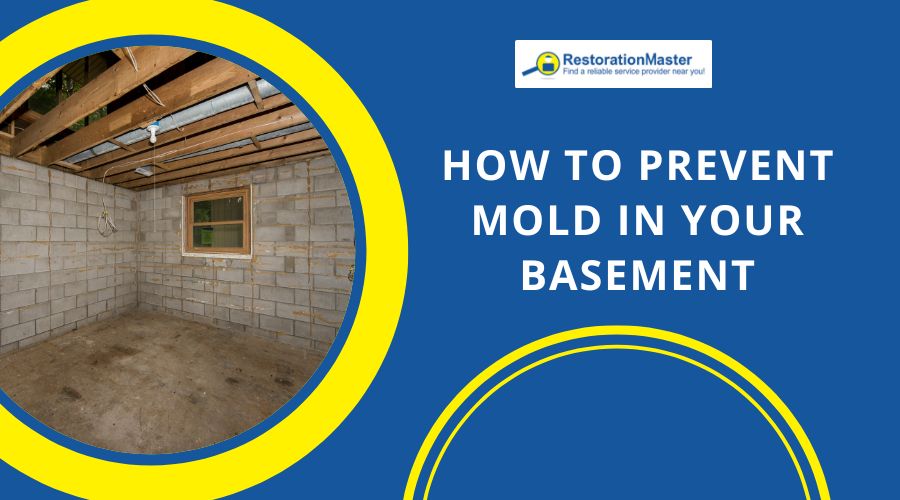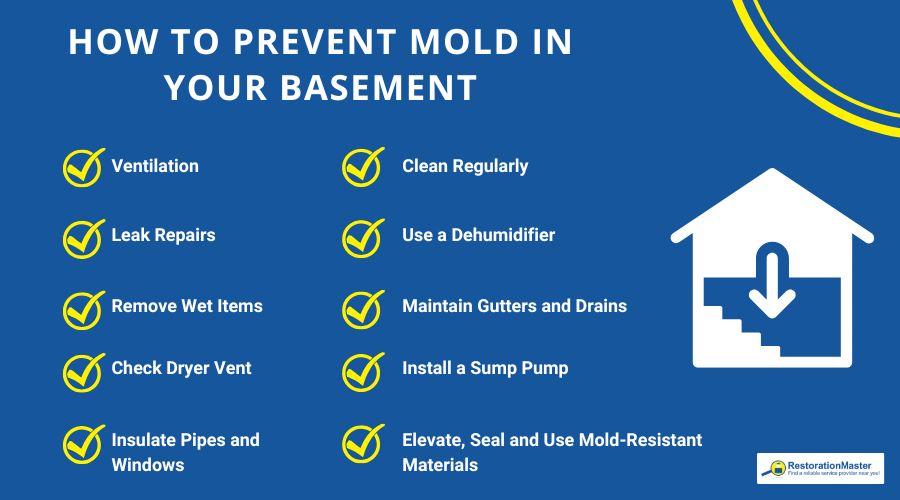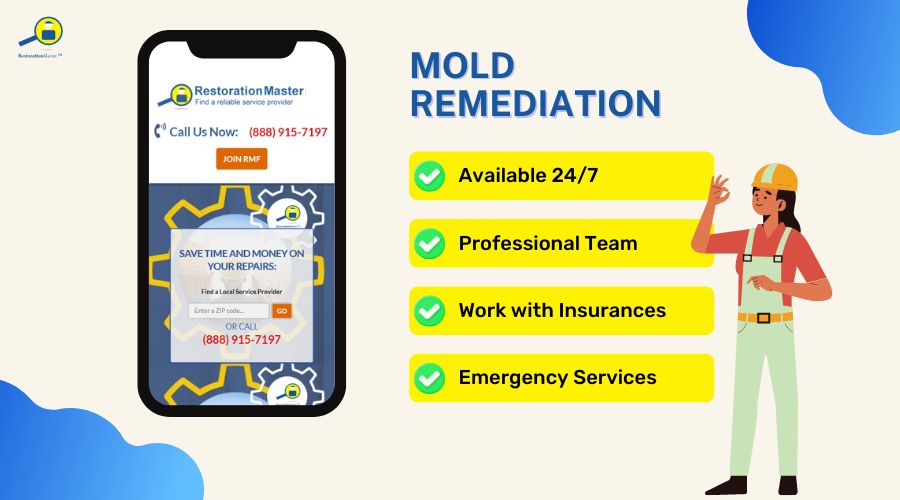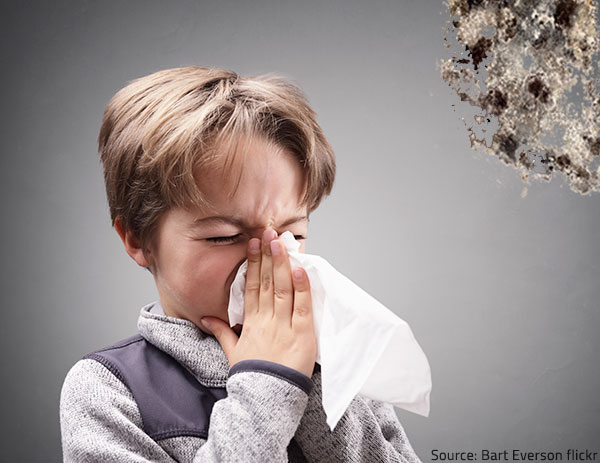How to Prevent Mold in Your Basement

Mold Growth in Basement
To effectively prevent mold growth in your home, it’s important to focus on the basement, which is often one of the most vulnerable areas. Basements can easily become damp due to high moisture levels, primarily caused by cracks or gaps in the foundation that let water seep in. If the space isn’t well-ventilated, this moisture can build up, creating a perfect environment for mold to grow.
The combination of darkness and dampness in basements makes them ideal for mold, and if left unchecked, this growth can spread and lead to health risks. That’s why it’s crucial to regularly inspect and clean your basement.
Additionally, basements are more susceptible to flooding and water damage compared to other parts of your home. If water lingers in the basement for too long, it sets the stage for mold to thrive. By taking proactive steps to manage moisture and improve ventilation, you can significantly reduce the risk of mold growth in your basement.
11 Tips to Prevent Mold Growth in Basement

- Ventilation: Make sure your basement is well-ventilated. Open doors and windows regularly, and use fans if necessary to keep the air circulating.
- Leak Repairs: Inspect the foundation, walls, and pipes for leaks. Fix any issues promptly to prevent water from seeping into the basement.
- Remove Wet Items: Get rid of any damp items like books, clothes, or other materials that could increase moisture levels in the basement.
- Check Dryer Vent: Ensure your dryer vent is properly venting to the outside. A clogged vent can trap moisture, raising humidity levels. Check the vent from the outside while the dryer is running to make sure it’s working correctly.
- Insulate Pipes and Windows: Prevent condensation during colder months by insulating pipes and windows. Fiberglass insulation and pipe sleeves work well to reduce moisture build-up.
- Clean Regularly: Keep the basement clean by regularly vacuuming and dusting to eliminate potential mold breeding grounds.
- Use a Dehumidifier: Run a dehumidifier to keep the humidity level below 60%. This helps remove excess moisture from the air, making the environment less inviting for mold.
- Maintain Gutters and Drains: Ensure gutters and drainage pipes are clear of debris to direct rainwater away from your home’s foundation.
- Install a Sump Pump: Use a sump pump to remove any water that accumulates in the basement. Regularly check and maintain the sump pump to ensure it functions properly.
- Elevate and Seal: Elevate items off the basement floor to protect them from potential water damage. Use waterproof storage solutions and seal any cracks in walls or floors to minimize moisture intrusion.
- Use Mold-Resistant Materials: Consider using mold-resistant drywall and paint in your basement or opt for materials that are less susceptible to mold growth.
Call Mold Remediation Services

The basement is the most vulnerable area in the home to high moisture levels which creates the ideal environment for mold to thrive. By following these tips, you can help prevent mold from growing in your basement by reducing the moisture level.
However, if you discover significant mold growth in your home, it is best to call a mold remediation company to make sure you and your family are safe.
Frequently Asked Questions
What does mold in a basement look like?
Mold in a basement can look quite different depending on its type, but there are some common features to watch for. You might see black or dark green mold, which can be particularly concerning as it’s often linked to toxic varieties. White mold usually appears fluffy or cottony, while gray mold might look dusty. Yellow and brown mold often shows up on damp wood or drywall.
In terms of texture, mold can feel soft and fluffy like cotton, or it might have a slimy, wet appearance. Sometimes, it can even look dry and powdery.
You’ll typically find mold on walls and ceilings, where it may create discolored patches or stains, as well as on floors—especially in damp areas like carpets or wooden surfaces. Don’t forget to check hidden corners, which are prime spots for mold growth. If you notice a musty smell, that’s often a sign that mold is present, even if you can’t see it
How to get rid of mold smell in basement?
Mold can be removed using baking soda and vinegar. Start by checking your basement for any visible mold on the walls, ceilings, and floors. If you find any, mix equal parts of vinegar and water in a spray bottle and spray it on the affected areas. Let it sit for a few hours, then scrub with a brush. For tougher spots, sprinkle baking soda directly on the mold, then spray the vinegar solution over it. This fizzy reaction helps lift the mold away.
To get rid of that musty smell, improve airflow by opening windows and doors or using fans. A dehumidifier can also help reduce moisture levels in the basement; aim to keep humidity below 60% to prevent mold from returning.
Can mold in basement affect upstairs?
Mold in the basement can definitely affect the upstairs areas of your home. Mold spores are lightweight and can easily become airborne, spreading through the air and circulating throughout the house. If there’s mold growing in the basement, these spores can travel through vents, cracks, and other openings, potentially leading to mold growth in bedrooms and living spaces upstairs.
Additionally, the musty smell that often comes with mold can seep through the floors and walls, creating an unpleasant odor that can linger throughout the entire house. If the mold in the basement is due to high humidity or moisture issues, those conditions can also make their way upstairs, creating a damp environment that encourages mold growth.












